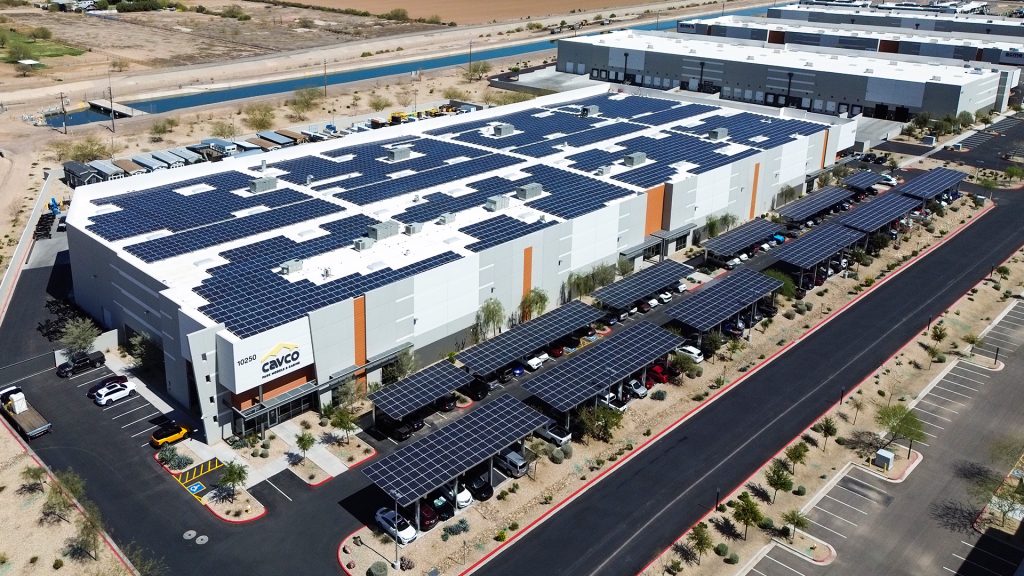 The commercial and industrial (C&I) solar market has long relied on a robust financial backbone: the Federal Investment Tax Credit (ITC). This incentive allows businesses to deduct a significant percentage of their solar system costs from federal taxes, making renewable energy projects an attractive financial strategy for many corporations. The Commercial Solar ITC Deadline is rapidly approaching. Recent legislative changes have accelerated the phase-out schedule for the full 30% commercial solar ITC, imposing a firm deadline on this era of maximum savings.
The commercial and industrial (C&I) solar market has long relied on a robust financial backbone: the Federal Investment Tax Credit (ITC). This incentive allows businesses to deduct a significant percentage of their solar system costs from federal taxes, making renewable energy projects an attractive financial strategy for many corporations. The Commercial Solar ITC Deadline is rapidly approaching. Recent legislative changes have accelerated the phase-out schedule for the full 30% commercial solar ITC, imposing a firm deadline on this era of maximum savings.
For businesses and property owners considering a solar installation, this isn’t just a technical update; it’s a time-sensitive call to action. If you’re ready to secure your financial future before this opportunity diminishes, contact Solar One for a professional estimate and timeline today.
The New Reality: Accelerated Phase-Out and Tightened Rules
Under the recently enacted One Big Beautiful Bill Act (OBBBA), the window to claim the full 30% Investment Tax Credit for your commercial solar and storage project is rapidly closing. The original expectation of a longer, multi-year ramp-down has been replaced by an accelerated cutoff, effectively forcing a much more compact development timeline.
To secure the maximum credit, your project must meet specific “begin construction” deadlines. Missing this critical milestone by mere weeks or months could mean leaving tens, or even hundreds, of thousands of dollars on the table.
In plain English: the financial landscape for future solar projects is about to get significantly more expensive. The certainty the ITC provided is dissolving, making 2025 and 2026 the final, high-value years to initiate your project.
Why the Rush? The Simple Truth About the Deadline
The urgency isn’t about flipping a switch; it’s about meeting a specific, hard-to-hit IRS benchmark known as “Begin Construction.”
To lock in the full credit, your project must officially pass this point by the deadline. For large commercial jobs, this doesn’t mean just signing a contract—it means proving to the IRS you’ve made a genuine, financial commitment.
The Critical IRS Notice 2025-42 Change
The rules for establishing “Begin Construction” were significantly tightened by the IRS in Notice 2025-42, effective for projects starting on or after September 2, 2025.
- For Large Solar Projects (Over 1.5 MW): The popular 5% Safe Harbor Rule (which allowed you to lock in the credit simply by ordering equipment) is no longer available. Now, these large-scale projects must strictly adhere to the “Physical Work of a Significant Nature” test to qualify.
- For Smaller Projects (Under 1.5 MW): The 5% safe harbor may still apply under certain conditions, offering a small grace note for small to mid-size commercial installations.
The critical insight? Getting to the “Begin Construction” stage takes months of complex planning, engineering, permitting, and financing. This new ruling makes the process much less flexible for large projects.
Furthermore, the law includes new constraints around Domestic Content and Foreign Entity of Concern (FEOC) sourcing, which can further impact your project’s final credit eligibility.
The window for planning, procuring, and preparing your project is closing fast. This has led to a massive industry rush, with experts already projecting strained supply chains and extended lead times. Don’t get caught in the bottleneck.
What Happens When the Credit Is Gone?
The end of the 30% ITC will not stop the solar industry, but it will fundamentally change the economics for end-users:
- Higher Net Costs: The out-of-pocket cost of a new commercial system will jump immediately, extending the payback period and reducing the overall lifetime ROI.
- Increased Project Complexity: Developers will need to work harder to find cost efficiencies and leverage smaller state or local incentives to bridge the financial gap.
- Project Delays & Bottlenecks: Expect a final surge as companies rush to meet the accelerated deadlines, potentially increasing equipment prices and lengthening permitting queues.
The Immediate Action Plan for Your Business
Delaying your decision is the same as accepting a lower return on investment. If you are a business owner, property manager, or facility operator, you need to act now:
- Get a Project Quote and Timeline: Engage with Solar One immediately. They can help you model your ROI with the 30% ITC and illustrate the financial penalty of waiting.
- Prioritize the “Physical Work” Test: If your project is over 1.5 MW, understand that the “paperwork” safe harbor is gone. Your timeline must now be entirely focused on getting boots on the ground to meet the Physical Work Test.
- Explore State and Local Incentives: While the federal credit is paramount, check if your state or local utility offers additional programs that can cushion the eventual phase-out.
The financial incentive that has defined the C&I solar industry for over a decade is officially on the runway for its final takeoff. Don’t watch this massive opportunity disappear from the tarmac. Ready to lock in your savings? Contact Solar One for a professional estimate and timeline today before the window closes.
Sources:
- IRS Notice 2025-42: https://www.irs.gov/pub/irs-drop/n-25-42.pdf
- OBBBA Renewable Energy Provisions: Frequently Asked Questions: https://www.huschblackwell.com/newsandinsights/obbba-renewable-energy-provisions-frequently-asked-questions-1
- Navigating the New IRS Notice 2025-42: https://www.novoco.com/notes-from-novogradac/managing-the-new-irs-beginning-of-construction-guidance
- The Beginning of the End: IRS Guidance Issued on Beginning of Construction Exception for Wind: https://www.sidley.com/en/insights/newsupdates/2025/08/the-beginning-of-the-end-irs-guidance-issued-on-beginning-of-construction-exception-for-wind
